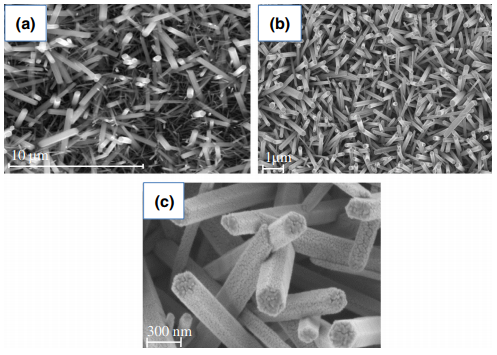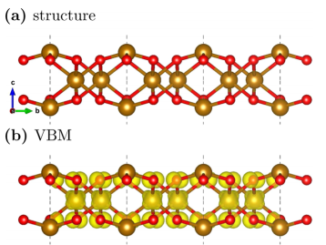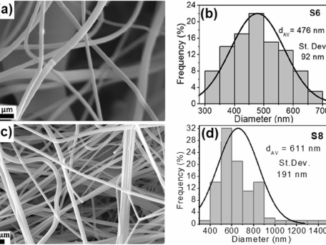
UV-assisted chemiresistors made with gold-modified ZnO nanorods to detect ozone gas at room temperature
Abstract: Two kinds of flexible ozone (O-3) sensors were obtained by placing pristine ZnO nanorods and gold-modified ZnO nanorods (NRs) on a bi-axially oriented poly(ethylene terephthalate) substrate. The chemiresistive sensor is operated at typically 1V at room temperature under the UV-light illumination. The ZnO nanorods were prepared via a hydrothermal route and have a highly crystalline wurtzite structure, with diameters ranging between 70 and 300nm and a length varying from 1 to 3m. The ZnO NRs were then coated with a ca. 10nm gold layer whose presence was confirmed with microscopy analysis. This sensor is found to be superior to detect ozone at a room temperature. Typical figures of merit include (a) a sensor response of 108 at 30ppb ozone for gold-modified ZnO NRs, and (b) a linear range that extends from 30 to 570ppb. The sensor is stable, reproducible and selective for O-3 compared to other oxidizing and reducing gases. The enhanced performance induced by the modification of ZnO nanorods with thin layer of gold is attributed to the increased reaction kinetics compared to pristine ZnO NRs. The sensing mechanism is assumed to be based on the formation of a nano-Schottky type barrier junction at the interface between gold and ZnO.
Author(s): Joshi, N; da Silva, LF; Shimizu, FM; Mastelaro, VR; M’Peko, JC; Lin, LW; Oliveira, ON
MICROCHIMICA ACTA
Volume: 186 Published: JUL 2019
DOI: 10.1007/s00604-019-3532-4




